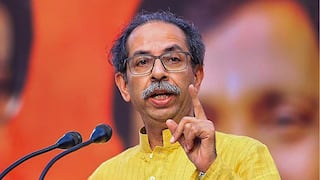India Vs Pakistan: Here's What ICC Rulebook Says About Ind Vs Pak T20 World Cup Last Over 'Confusion'
The win was celebrated and cherished across India, on the other hand, the two objections raised by Pakistan skipper Babar Azam in the last over have left Pakistan’s fans and former cricketers fuming.

In the ICC T20 World Cup 2022, India defeated Pakistan by four wickets on Sunday in a high-voltage clash. Virat Kohli’s crucial knock of 82 runs not only saw India digging from the hole but also set the tone for the rest of the tournament. However, the match which was filled with intensity and drama left controversies that will be debated in the future. A lot happened in the 20th over of the match bowled by Mohammad Nawaz, which had a massive impact on the end result.
On the Indian side, the victory is being celebrated and cherished across the country and is being seen as a pre-Diwali gift, on the other hand, the two objections raised by Pakistan skipper Babar Azam which erupted in the last over of the match bowled by Nawaz have left Pakistan’s fans and former cricketers fuming.
The No Ball That Made The Difference
The first instance that created confusion came on the third ball of the 20th over of the Indian innings, when a full toss bowled by Nawaz was smashed for a six by Virat Kohli. It was declared a no-ball which made the matter worse for the Pakistan team which was in the driver's seat before that moment.
From 13 runs needed off three balls, it came down to six needed off three balls. The skipper of the Pakistan team raised objections and Babar and company approached the Umpires to seek clarity about the same. The TV replays suggested that it was a 50-50 call that could have gone either way but went India’s way in this case. Virat Kohli was well outside the crease, although his trailing leg was still on the line.
What Does The Cricket Rule Book Say?
According to Cricket’s rulebook, clause 41.7.1 says “Any delivery, which passes or would have passed, without pitching, above waist height of the striker standing upright at the popping crease, is to be deemed to be unfair, whether or not it is likely to inflict physical injury on the striker. If the bowler bowls such delivery the umpire shall immediately call and signal No ball.”
In this instance, the rule stated in ICC’s rulebook can be interpreted either way. If “at the popping crease” means a batsman standing on the line, according to that Kohli was safe. Besides that, if the no-ball was to be given in case the foot of the batsman was “inside” the crease rather than just “on” or “at” it, the rule book would have said so.
However, based on a popular saying in the game of cricket “the line belongs to the umpire and not the batter” and if “on the line” means the same way it is for stumpings and runouts, it should not have been a no-ball and the hence a free hit would not have been awarded.
The Free Hit Added Insult To Injury For Pakistan Team
The second controversy followed right after the first one when Nawaz managed to knock Kohli’s stumps over but he survived because of the free hit. After hitting the stumps the ball went into the third-man region allowing the Indian batters to steal three runs. The controversy here is why the ball was not declared dead after Kohli was bowled out.
What Does The Rule Book Say?
According to the game’s rulebook, clause 21.19.2 of the ICC playing conditions for the World Cup states: “For any free hit, the striker can be dismissed only under the circumstances that apply for a No ball, even if the delivery for the free hit is called Wide.” In case of a no-ball which is followed by a free hit, the batter can be declared out for hitting the ball twice, obstructing the field, or run out.
Since Kohli was bowled out, he was not out according to the rulebook and since he was not out, it was not a dead ball. Thus so the runs taken were legal.
Trending News
Top Headlines




































